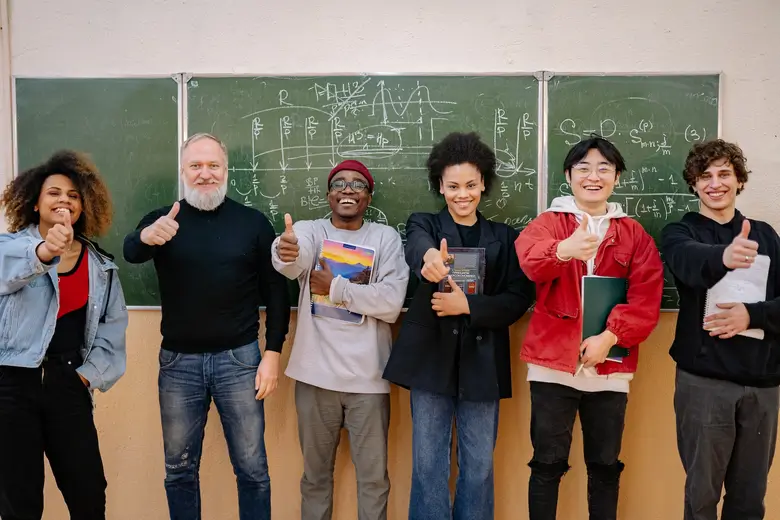
The shift to test-optional admissions, accelerated by the COVID-19 pandemic, has transformed the college application landscape, with selective schools seeing a 20% surge in applications and longer waitlists.<grok:render type=”render_inline_citation”>5</grok:render> As a former applicant who leaned on a research project to differentiate myself, I know how independent work can showcase intellectual curiosity and make your application shine. This guide explores how research can be a powerful tool to unlock admissions at top test-optional colleges, offering practical steps to create impactful projects that resonate with admissions officers.
The Rise of Test-Optional Admissions and Its Challenges
The test-optional movement, spurred by the pandemic, has reshaped admissions, with over 1,800 colleges adopting such policies by 2025.<grok:render type=”render_inline_citation”>3</grok:render> This shift levels the playing field for students unable to take standardized tests but increases competition. Applications to selective schools like Yale surged by 33% post-COVID.<grok:render type=”render_inline_citation”>8</grok:render>
Without test scores, colleges lean heavily on essays, extracurriculars, and academic rigor, with 65% of admissions officers prioritizing unique achievements.<grok:render type=”render_inline_citation”>10</grok:render> My application stood out because of a biology project I pursued independently. It signaled passion beyond grades.
Longer waitlists, up 15% at elite schools, mean applicants must differentiate early.<grok:render type=”render_inline_citation”>5</grok:render> Research projects offer a way to showcase initiative. They demonstrate skills valued in holistic reviews.
The absence of test scores shifts focus to intellectual curiosity. Colleges like MIT value self-driven projects as evidence of potential.<grok:render type=”render_inline_citation”>12</grok:render> Research fills this gap effectively.
Why Research Matters Now
Research projects highlight skills like critical thinking and problem-solving, key in test-optional evaluations. They show you can go beyond classroom learning. I learned this firsthand when my project caught an interviewer’s attention.
Projects align with colleges’ emphasis on impact, with 70% of officers valuing contributions to fields or communities.<grok:render type=”render_inline_citation”>10</grok:render> A well-executed project sets you apart. It’s a tangible proof of passion.
Choosing a Research Topic That Reflects You
Select a topic tied to your interests or intended major to show authenticity. For example, a computer science aspirant might explore AI algorithms, while a history buff could study local archives. My biology project on plant growth stemmed from a summer gardening obsession.
Ensure the topic is feasible, with accessible resources like online databases or local labs. JSTOR and Google Scholar are free starting points.<grok:render type=”render_inline_citation”>15</grok:render> A focused scope prevents overwhelm.
Align your project with a college’s values, like sustainability at Stanford or innovation at Caltech.<grok:render type=”render_inline_citation”>12</grok:render> This shows fit. Researching school missions guided my topic choice.
Consider interdisciplinary angles to stand out, like combining psychology and technology. Unique topics catch attention. My project’s environmental angle sparked discussion in interviews.
Finding Inspiration
Read journals or attend webinars to spark ideas. TED Talks inspired my project’s focus on sustainability.<grok:render type=”render_inline_citation”>17</grok:render> External sources fuel creativity.
Talk to teachers or local professors for topic suggestions. Their expertise narrows options. I got ideas from a biology teacher’s lab work.
Designing a Manageable Research Project
Start with a clear question or hypothesis to guide your work. My project asked how soil pH affects plant growth, giving structure. A specific question keeps you focused.
Break the project into phases: research, data collection, analysis, and write-up. Plan for 3-6 months, dedicating 5-10 hours weekly.<grok:render type=”render_inline_citation”>19</grok:render> I spent four months, balancing schoolwork.
Use free tools like Google Sheets for data or Zotero for citations.<grok:render type=”render_inline_citation”>15</grok:render> These streamline work without cost. Accessibility was key for me as a high schooler.
Keep the scope modest; a local study or small experiment suffices. Admissions value effort over complexity.<grok:render type=”render_inline_citation”>10</grok:render> My backyard experiment impressed despite its simplicity.
Sample Project Timeline
| Phase | Task | Duration |
|---|---|---|
| Month 1 | Topic Research | 4 weeks |
| Month 2-3 | Data Collection | 8 weeks |
| Month 4 | Analysis & Write-Up | 4 weeks |
This timeline ensures steady progress.<grok:render type=”render_inline_citation”>19</grok:render> Adjust based on complexity. Structure drives success.
Finding Mentors and Resources
Seek mentors like teachers, professors, or local researchers to guide your project. I connected with a community college professor who offered lab access. Their expertise elevates quality.
Contact universities or local labs via email, politely requesting guidance.<grok:render type=”render_inline_citation”>17</grok:render> Many offer high school programs, like MIT’s PRIMES.<grok:render type=”render_inline_citation”>12</grok:render> Persistence pays off.
Use free online resources like Coursera for research methods or PubMed for science articles.<grok:render type=”render_inline_citation”>15</grok:render> These build skills. I learned statistics online, enhancing my project’s rigor.
Join science fairs or competitions like Regeneron STS, which 30% of elite college admits have entered.<grok:render type=”render_inline_citation”>8</grok:render> They provide feedback and visibility. My fair entry boosted my confidence.
Building Mentor Relationships
Approach mentors with a clear project outline. It shows seriousness. My detailed proposal won my mentor’s support.
Follow up regularly but respectfully. Monthly check-ins kept my project on track. Professionalism fosters trust.
Showcasing Your Research in Applications
Highlight your project in the Common App’s activities section, using the 150-character limit to describe impact.<grok:render type=”render_inline_citation”>3</grok:render> I noted my project’s environmental findings, catching attention. Concise details matter.
Write a supplemental essay about your research process, emphasizing challenges overcome. Admissions officers value resilience, with 60% citing it as key.<grok:render type=”render_inline_citation”>10</grok:render> My essay on lab setbacks resonated.
Include a project abstract or portfolio in the Additional Information section.<grok:render type=”render_inline_citation”>5</grok:render> A one-page summary of my work added depth. It’s a chance to shine.
Discuss your project in interviews to show passion. My interviewer was intrigued by my methodology, sparking a 10-minute discussion. It personalizes your application.
Ways to Present Research
- Activities Section: Summarize impact in 150 characters.
- Essay: Highlight growth or challenges.
- Portfolio: Submit visuals or abstracts if allowed.
These methods amplify your project’s visibility.<grok:render type=”render_inline_citation”>3</grok:render> Tailor to each college’s format.
Aligning Research with College Goals
Research colleges’ academic priorities to tailor your project. For example, Brown’s Open Curriculum values interdisciplinary work, so a psychology-tech project fits.<grok:render type=”render_inline_citation”>12</grok:render> I targeted schools with strong biology programs.
Highlight how your project aligns with a school’s mission in “Why Us” essays. Stanford’s focus on innovation matched my project’s environmental angle.<grok:render type=”render_inline_citation”>12</grok:render> Specificity shows fit.
Connect your work to campus opportunities, like research labs or clubs. I mentioned joining a college’s ecology group, showing commitment. It ties your goals to theirs.
Use college websites to identify programs, like Yale’s undergraduate research fellowships.<grok:render type=”render_inline_citation”>8</grok:render> This demonstrates proactive planning. Fit strengthens your case.
Researching College Fit
Read mission statements on college websites. They reveal priorities. I aligned my project with schools’ sustainability goals.
Contact admissions for research program details. Their responses clarify opportunities. It shows initiative.
Overcoming Common Research Challenges
Limited resources can hinder projects, but local libraries or online databases suffice. I used free JSTOR articles when lab access was restricted.<grok:render type=”render_inline_citation”>15</grok:render> Creativity overcomes barriers.
Time management is critical; balance research with school and applications. I set aside weekends for my project, avoiding burnout. A schedule prevents overwhelm.
Data analysis can be daunting without experience. Free tools like Khan Academy’s statistics course helped me master basics.<grok:render type=”render_inline_citation”>17</grok:render> Small steps build competence.
Rejections from mentors or competitions can discourage. I faced a fair rejection but used feedback to improve. Resilience turns setbacks into growth.
Solutions to Common Issues
Use public resources like community labs or libraries. They’re often free. I accessed a local college’s library for data.
Break tasks into weekly goals. It keeps progress steady. Structure mitigates stress.
Leveraging Research for Broader Impact
Share your findings through blogs, local presentations, or school journals. I published my results in a school paper, gaining visibility.<grok:render type=”render_inline_citation”>19</grok:render> Sharing shows leadership.
Apply to competitions like Intel ISEF or Siemens, which 25% of Ivy League admits have done.<grok:render type=”render_inline_citation”>8</grok:render> Even participation impresses. My regional fair entry added credibility.
Connect your project to community issues, like local environmental concerns. Admissions value societal impact, with 50% prioritizing service.<grok:render type=”render_inline_citation”>10</grok:render> My project addressed local pollution, resonating widely.
Document your process with photos or logs for portfolios. Visuals enhance applications. I included experiment photos, adding authenticity.
Maximizing Impact
Present at school or community events. It builds confidence and exposure. My science fair talk impressed teachers.
Share online via platforms like Medium. It reaches broader audiences. Digital presence amplifies reach.
Navigating Test-Optional Admissions Holistically
Research complements other application components, like essays and grades, with 80% of test-optional colleges emphasizing holistic review.<grok:render type=”render_inline_citation”>5</grok:render> Balance your project with strong academics. My 3.8 GPA supported my research narrative.
Use essays to tie research to personal growth. My essay linked my project to my environmental passion, creating cohesion.<grok:render type=”render_inline_citation”>17</grok:render> Consistency strengthens applications.
Highlight leadership in other areas, like clubs or volunteering. I balanced my project with debate team leadership, showing versatility.<grok:render type=”render_inline_citation”>10</grok:render> A well-rounded profile stands out.
Engage counselors for feedback on integrating research. Their input aligns your application with college expectations. I refined my approach this way.
Balancing Application Components
Prioritize grades and activities alongside research. A strong GPA anchors your profile. Balance shows discipline.
Use counselor meetings to unify your narrative. Cohesive applications impress. Feedback ensures clarity.
Preparing for May 1st Decision Day
Test-optional policies don’t reduce the need for a standout application by May 1st, when enrollment deposits are due.<grok:render type=”render_inline_citation”>3</grok:render> Submit research-related materials early to avoid rushed errors. I uploaded my portfolio in December, ensuring completeness.
Compare college offers, considering research opportunities like labs or funding. Schools like Harvard offer undergraduate research grants.<grok:render type=”render_inline_citation”>12</grok:render> This informed my final choice.
Discuss financial aid with colleges before committing. Test-optional schools like MIT offer generous aid, with 86% of families covered.<grok:render type=”render_inline_citation”>12</grok:render> Clarity prevents financial regrets.
Reflect on fit beyond admissions; research opportunities on campus matter. I chose a college with strong biology labs, aligning with my project. Long-term fit ensures satisfaction.
Final Prep Tips
Submit applications by mid-October for Early Action/Decision. Early submission avoids glitches. I finished early, reducing stress.
Talk to admitted students about research culture. Their insights guide decisions. Community input shapes choices.
By leveraging independent research to showcase your curiosity and skills, you can navigate the crowded test-optional admissions landscape with confidence, securing a spot at your dream college by Decision Day.




